#Haoma plant
Text
Zoroastrianism: the Religion of Fire that inspired the Hebrew Bible - Historic Mysteries
Zoroastrianism: the Religion of Fire that inspired the Hebrew Bible – Historic Mysteries
https://www.historicmysteries.com/zoroastrianism/
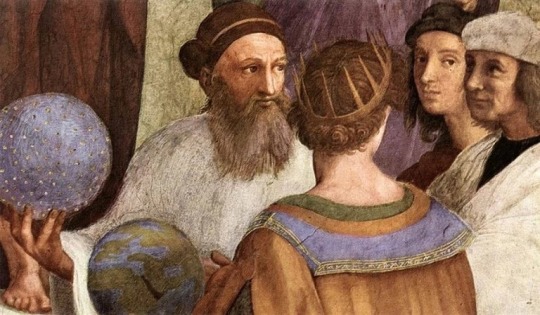
View On WordPress
#Afghanistan#Agiary#Ahura Mazda#Amesha Spentas#Angra Mainyu#Avesta#Bactria#bible#Cyrus the Great#Fire Temple#Freddie Mercury#Gathas#Haoma plant#Iran#King Vishtaspa#Mongol#monotheistic#Muslim#Persia#Queen Hutosa#Quran#Spitama#Zarathustra#Zaratosht#Zoroaster#Zoroastrianism
2 notes
·
View notes
Text




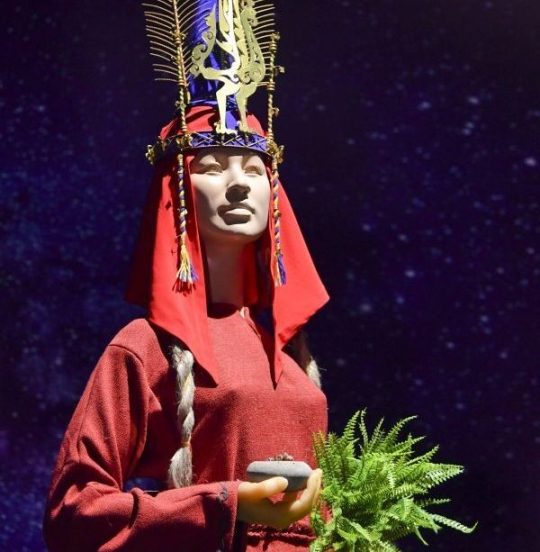

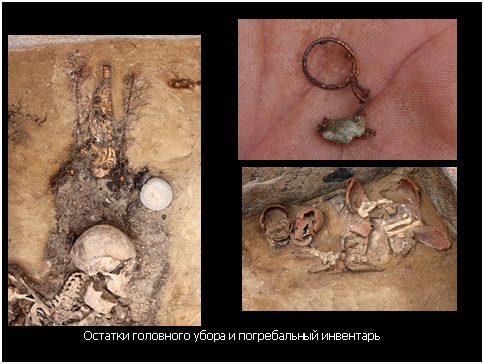
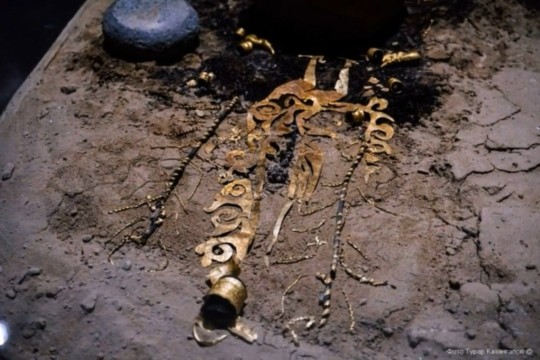
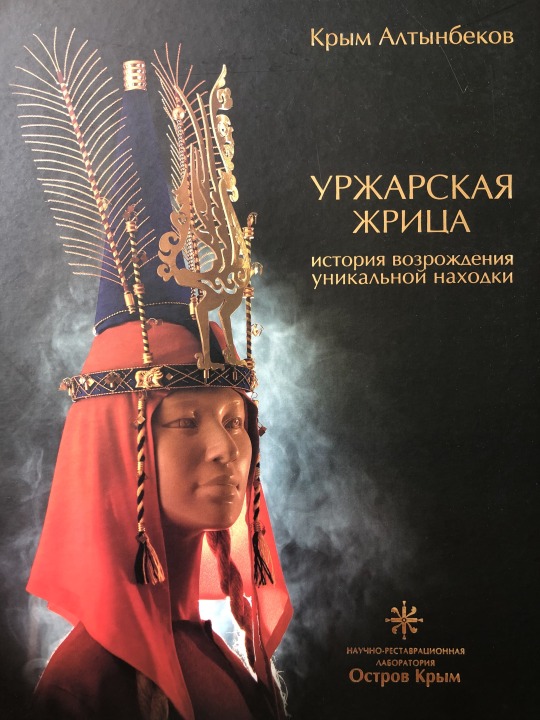

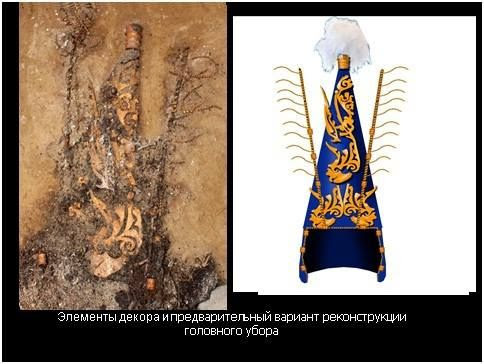

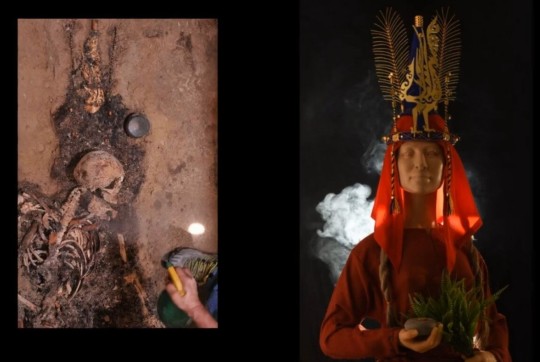

The Urzhar Priestess 5th-3rd C. BCE.
"Powerful plants: Study of ancient plant remains and written sources has shown that the Saka had a sophisticated knowledge of the medicinal and stimulant properties of plants. They had access to a rich natural medicine cabinet, in addition to those plants they may have cultivated themselves. The ‘Urzhar priestess’ was buried with a wig made of grasses, and a variety of medicinal herbs. Ferns were known to have anti-inflammatory, antiseptic, and painrelieving properties. Cumin, thistle, and plantain were used for their bactericidal effect. Campion, used to treat poisoning and digestive issues, and cannabis for pain relief. In the wider Scythian world, finds of cannabis seeds with a burner from the Altai cemetery of Pazyryk show that it was used during funerary rituals. The Persians identified Saka ‘haoma-consumers’, an unknown plant with an intoxicating effect.
Reconstruction of the burial costume of the Urzhar priestess: Buried with a magnificent golden headdress and a mortar for grinding the medicinal herbs that were placed in her grave. Her high status is linked with her skills as a herbalist, and indicates that Saka respect for the natural world extended to plants as well as animals. Urzhar, modern reconstruction of Saka costume Linen, silk, bronze, wood, woollen cloth, metal alloy
Reconstruction by K. Altynbekov. КПо94-39116"
-taken from FitzMuseum
#scythian#saka#history#ancient history#museums#antiquities#antiquity#pagan#archaeology#anthropology#herbalism#plants and herbs
177 notes
·
View notes
Text
History And Background Of Amanita Muscaria Mushrooms

Amanita Muscaria mushrooms are noted for their psychoactive properties, due to their containing the hallucinogenic chemicals ibotenic acid and muscimol. Also known as toadstools, these mushrooms have long been associated with magic in literature. The caterpillar in Alice in Wonderland is portrayed as sitting on one as he smokes his suspicious pipe, and in animated cartoons, Smurfs are seen to live in Amanita mushrooms. Of course, circles of mushrooms growing in the forest are frequently referred to as fairy rings.
It has been reported that as early as 2000 B.C. people in India and Iran were using for religious purposes a plant called Soma or Haoma. A Hindu religious hymn, the Rig Veda also refers to the plant, Soma, although it is not specifically identified. It is believed this plant was the Amanita Muscaria mushroom, a theory popularized in the book "Soma: Divine Mushroom of Immortality" by R. Gordon Wasson. Other authors have argued that the manna from heaven mentioned in the Bible is actually a reference to magic mushrooms. Images of mushrooms have been identified in cave drawings dated to 3500 B.C.
In the church of Plaincourault Abbey in Indre, France is a fresco painted in 1291 A.D. of Adam and Eve standing on either side of the tree of knowledge of good and evil. A serpent is entwined around the tree, which looks unmistakably like a cluster of Amanita Muscaria mushrooms. Could it be true that the apple from the Garden of Eden may actually have been an hallucinogenic mushroom?
Siberian shamans are said to have ingested Amanita Muscaria for the purpose of reaching a state of ecstasy so they could perform both physical and spiritual healing. Viking warriors reportedly used the mushroom during the heat of battle so they could go into a rage and perform otherwise impossible deeds.
In the Kamchatka peninsula of Russia the medicinal use of Amanita Muscaria topically to treat arthritis has also been reported anecdotally. L. Lewin, author of "Phantastica: Narcotic and Stimulating Drugs: Their Use and Abuse" (Kegan Paul, 1931) wrote that the fly-agaric was in great demand by the Siberian tribes of northeast Asia, and tribes who lived in areas where the mushroom grew would trade them with tribes who lived where it could not be found. In one occasion one reindeer was traded for one mushroom.
It has been theorized that the toxicity of Amanitas Muscaria varies according to location and season, as well as how the mushrooms are dried. Click now organic magic shrooms
Finally, it should be noted that the author of this article does not in any way recommend, encourage nor endorse the consumption of Amanita Muscaria mushrooms. It is believed that the U.S. Food and Drug Administration lists Amanita Muscaria as a poison. Some companies that sell these mushrooms refer to them as "poisonous non-consumables."
3 notes
·
View notes
Text
History And Background Of Amanita Muscaria Mushrooms

Amanita Muscaria mushrooms are noted for their psychoactive properties, due to their containing the hallucinogenic chemicals ibotenic acid and muscimol. Also known as toadstools, these mushrooms have long been associated with magic in literature. The caterpillar in Alice in Wonderland is portrayed as sitting on one as he smokes his suspicious pipe, and in animated cartoons, Smurfs are seen to live in Amanita mushrooms. Of course, circles of mushrooms growing in the forest are frequently referred to as fairy rings.
It has been reported that as early as 2000 B.C. people in India and Iran were using for religious purposes a plant called Soma or Haoma. A Hindu religious hymn, the Rig Veda also refers to the plant, Soma, although it is not specifically identified. It is believed this plant was the Amanita Muscaria mushroom, a theory popularized in the book "Soma: Divine Mushroom of Immortality" by R. Gordon Wasson. Other authors have argued that the manna from heaven mentioned in the Bible is actually a reference to magic mushrooms. Images of mushrooms have been identified in cave drawings dated to 3500 B.C.
In the church of Plaincourault Abbey in Indre, France is a fresco painted in 1291 A.D. of Adam and Eve standing on either side of the tree of knowledge of good and evil. A serpent is entwined around the tree, which looks unmistakably like a cluster of Amanita Muscaria mushrooms. Could it be true that the apple from the Garden of Eden may actually have been an hallucinogenic mushroom?
Siberian shamans are said to have ingested Amanita Muscaria for the purpose of reaching a state of ecstasy so they could perform both physical and spiritual healing. Viking warriors reportedly used the mushroom during the heat of battle so they could go into a rage and perform otherwise impossible deeds. Click now psychedelic mushrooms for sale
In the Kamchatka peninsula of Russia the medicinal use of Amanita Muscaria topically to treat arthritis has also been reported anecdotally. L. Lewin, author of "Phantastica: Narcotic and Stimulating Drugs: Their Use and Abuse" (Kegan Paul, 1931) wrote that the fly-agaric was in great demand by the Siberian tribes of northeast Asia, and tribes who lived in areas where the mushroom grew would trade them with tribes who lived where it could not be found. In one occasion one reindeer was traded for one mushroom.
2 notes
·
View notes
Text
Shamanic Ape
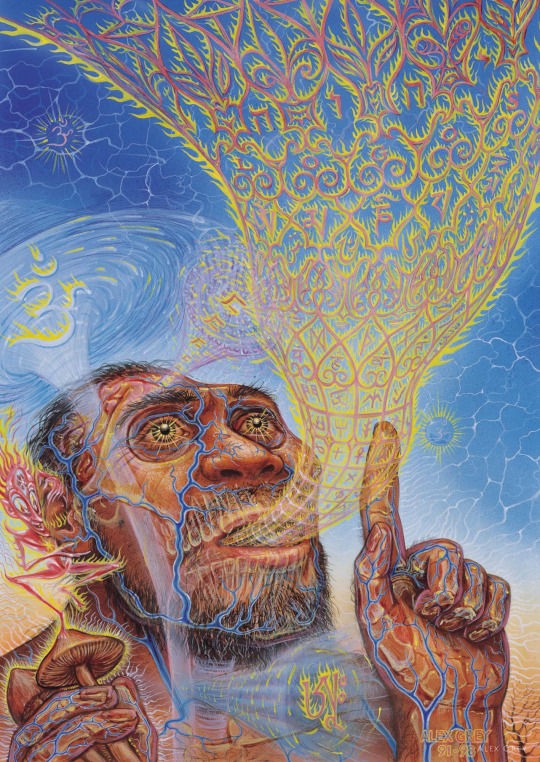
If we align what we now know about entheogens in modern neurology, and what was originally there within the religions, until things became mistranslated, we could fix society from within.
Entheogens comes from 'En' meaning 'In', 'Theo' meaning 'God', and 'Gen' like within 'Generate'.
Psychedelics can cause the brain to become more activated, and allow for creation of new neural-pathways. Cannabis can create neural-regenesis; where the cannabinoids & omega oils within it regulate neural-firing, whilst harmonizing the brains development.
With an advanced study of many of the world's religious texts, we can show that psychedelics & cannabis were being used to increase human potential. On the other hand multiple ancient religious ideas banned alcohol, and the eating of death (meat, vinegar, etc), as it slows the body down, and makes our whole system less efficient.
Within the Dharmic religious texts they drank Soma, which gave them god-like powers, and allowed connection with the Divine. Soma was most likely fly-agaric mushrooms, turned into a drink, by boiling the poisoning out of them. Plus Bhang, which is a drink made with milk & cannabis.
The Zoroastrian texts have Haoma, which is clearly described as resembling the sacred geometry of the cannabis plant.
The Bible had the Holy Anointing Oil containing Kaneh-Bosem; this is where we get the etymology of the word Cannabis - which was a Greek transliteration from the Semitic culture, that they'd imported hemp from. Places like Canna were known for growing vast quantities of hemp; which has been used for sackcloths, rope, etc for most of human history.
THC is fat soluble, so when the Holy Anointing Oil ingredients are combined (Exodus 30:23-25 - Pure myrrh, Sweet Cinnamon, Cannabis, Cassia, Olive oil), this causes it to become a molecular compound - thus increasing the healing potential of each, and basically making a Magic Medicine.
The Shewbread in the Bible was made from a mixture of sprouted grains, similar to the Essene bread, where it matched Ezekiel's (4:9) Bread recipe (wheat, barley, beans, lentils, millet, spelt). Because when the grains are left to naturally proof, they created ergot on the barley, this made it psychedelic; yet also lethal, unless the ergot is boiled - so the Shewbread was both boiled, and then baked.
The ancient Greeks as well as using cannabis, had a place called Eleusis where they went, and had a barley drink called Kykeon, which was able to increase human intelligence. - This has become a mystery to what they performed there. Many of the intellectual Roman Emperors (Patricians) went there, as well as Plato, Socrates, etc. Plato said 'if it wasn't for our Kykeon, we would not have our democracy.' Kykeon was where barley was left in a vat of water, with a bit of ergot added to start the process, and then it was left until the liquid went black. This was then boiled for hours similar to the Shewbread process, and Pennyroyal was added for flavour. Kykeon then became a form of LSA, and ergot is where we got the idea for LSD from.
There are many other religious cultures around the world, that we can show had similar usages of cannabis in many of their ceremonies, and advanced psychedelic usages for direct interaction with the Divine.
The reason this knowledge has been forgotten, and mistranslated, is because it was kept back from most of society, and kept to the elders in multiple cultures. This has then lead to only a select few remembering these ancient practises, and so it has become lost in translation.
David started sharing the Shewbread with the people, as to make a more enlightened society, and not just an elite class ruling over them. Yeshua shared the Holy Anointing Oil with the masses; where it has the power to heal many things, like Cancer, Leprosy, MS, Epilepsy, menstrual issues, Crohn's, Asthma, etc. Many think it was only Christ who healed people, yet the Disciples in Mark 6:13 went out healing people with the Holy Anointing Oil, and this is why they were called Christians (Anointing ones). The early church in James 5:14, also were saying if you had an ailment, it would be healed with the anointing. Since now with our knowledge of the biological effects of medical cannabis, we can show that cannabis can cure many things, we can show it wasn't all just miracles, that were random in some way, yet a calculated science given to us by the Divine in the first place.
When psychedelics are used in micro-dosing, which allows for new neural pathways to be created; where just like mycelium interconnects a forest roots together, the same with certain mushrooms, can allow our brain to work much faster, and efficiently allows for rewiring of the brain. It is possible to educate people much faster, when they are slightly tripping, as it opens up the paths of the brain to interconnect more proficiently, and it can also fix parts that haven't been efficient enough.
Taking psychedelics on their own doesn't automatically make someone smarter, yet within the ancient Greek religious ideas & language, are advanced metaphors, where there is layer upon layer of cryptology, forcing the brain to do somersaults, and in so doing making it become a gymnast - where the brain is then cable of doing much more advanced dynamic thinking. Same with the ancient Hebrews, who also used a much more advanced layering of cryptology, where when Isaiah 29:9-14 says they will be given the Bible, yet won't understand it; it is due to their usage of alcohol, and not entheogens, that has lead to a lowering of the societal aptitude. So the symbolic writing, and metaphoric descriptions have become random, when they are concise intertextuality.
Cannabis is needed as a food when expanding the neural networks, as it helps regulate not over-firing of neural-receptors; in other words, making sure we stay methodical, and logically balanced in each step.
Between using both in the right dosages, where the Holy Anointing Oil being put in the hair allows it to soak in as needed; this is where Yeshua said, 'when you fast, go in your room, and anoint yourself, where God will then reward you' (Matthew 6:17-18), as it allows us to connect with the Divine.
The original Hebrew religion, like the Zoroastrianism one were focused on the cannabis plant as a sacred gift from the Divine. The Israelite candle in Exodus 25:31-40 is in the shape of a cannabis leaf, where the alter and the priest were all anointed. There were many religions in the Middle East, that all went into a smoke filled tent, and would come out with prophetic utterances.
The whole concept of the Messiah/Christ is the anointed one, who has the advanced knowledge to connect with God directly.
Now without a proper system for usage of entheogens in the society, we've allowed it to become criminal, where our youth practise debauchery, rather than something that was regal; where kings were coronated with it, and only the elders of society were allowed to distribute it.
This is where prophecies concerning the world becoming like Babylon the Great, is because instead of entheogens being used to enlighten society (as they were in ancient cultures), we've lived through the dark ages, where we've lived in a society of debauchery.
Now if we were to instigate a society micro-dosing with a holy communion of Essene unleavened Shewbread, this would mean instead of religion creating dogmatic people, they'd be more dynamic, increase their intelligence, and overall make everyone more vibrant.
When cannabis is returned into the Holy Anointing Oil, it would be possible to heal people of many ailments, and also make a calmer, less aggressive, less egocentric society, who have far more empathy. Both cannabis & psychedelics allows diminished egos, as it allows the barriers to come down; which then means not only do we connect more with the divine, yet with each other.
0 notes
Text
Cartoon idea: Aethersworn
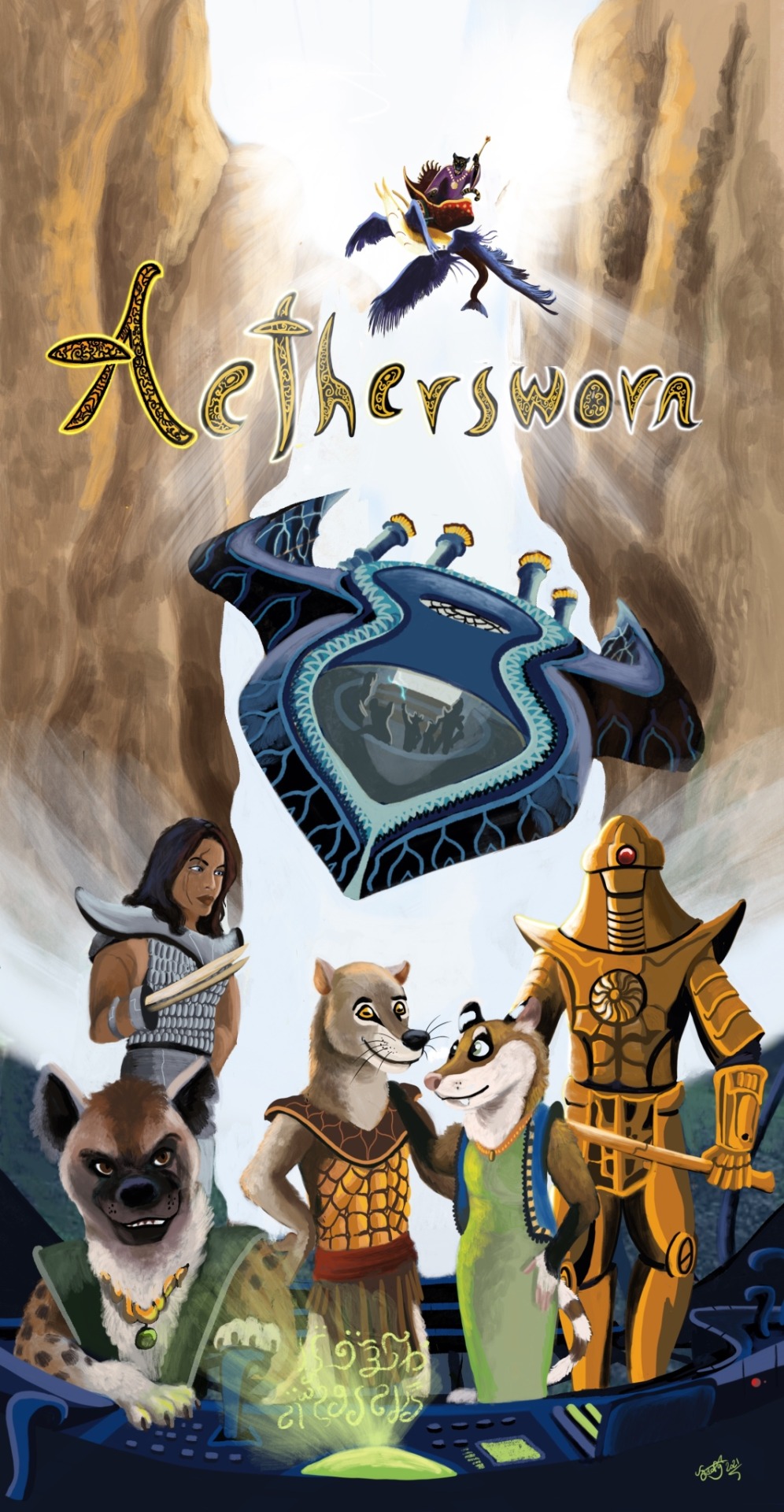
(Art commissions by “HodariNundu” and Dylan Bajda)
Basic premise:
An Iranian inspired science-fantasy multiverse.
***
Aethersworn Characters:
Haoma – deltatheroidean protagonist. Shy, lawful, wants to heal people. He is in love with Vasin. Has plant based magic.
Vasin – pakicetid deuteragonist. Idealistic, impulsive, science-oriented. A casanova heartbreaker, but could Haoma change this? Has electricity based powers.
Kalang – hyena pilot. Reserved, snarky, secretive. The last practitioner of Druj, and as such has dark magic.
Nareh – human captain. Authoritative, reasonable, organised. Cares about the crew but butts heads with Vasin. Has her right arm modified into a pair of scimitars made from her ulna and radius.
Wali – robot technician/soldier. Quirky, cheerful, funny. Made of gold, inside and out.
Hvar – panther antagonist. Open, fatherly, guilty. The shah himself, he has been alive for thousands of years and wants suffering to just end already. As the highest authority within the Order of Arta, is essentially an all-seeing sun god.
Targitaos – wolverine antagonist. Hvar’s lover, doing what he can to see his vision achieved. Is a massive ball of anger, fire and Scythian-looking tattoos.
Mainyu – stag antagonist. Scheming, cruel, bigoted. Doesn’t agree with Hvar’s vision and wants a more authoritarian Order of Arta.
Gizbar & Bahar – antagonist adoptive twins (dhole & bee, respectively). They’re kind of there.
*******
Factions:
The Order of Arta – Religious order, Persia analogue
The Moksha Hive – The “alien” hive mind
The Zarva Monks – Ascetics, based on Zurvanism
The Druj Empire – currently extinct, based on the Scythians
The Sacrament – Religious order, Christianity analogue
Tabiti Fire-Speakers – Religious minority, equal parts based on Scythian and religious minorities like Yazidis.
Worlds (satraps within the Order of Arta):
Sohwul: Crown world of the Order of Arta.
Sagaar: Haoma’s homeworld, garden world.
Chrysor: Greco-Roman analogue.
Naraka: Former Druj homeworld, dark ruins.
Liwa: Hittite analogue.
Shemharesh: Mesopotamia/Canaan analogue.
Unaktil: frozen world, Inuit analogue.
Bhamarivo: Madagascar analogue.
Daganavia: sky world, Tocharian analogue.
Ranmin: ocean world, China analogue.
Sekhem: Egyptian analogue.
#make a better cartoon#animation#lgbt#lgbtq#persian#persia#iran#iranian#fantasy#furry#sci-fi#science fantasy#representation
0 notes
Text
History And Background Of Amanita Muscaria Mushrooms
Amanita Muscaria mushrooms are noted for their psychoactive properties, due to their containing the hallucinogenic chemicals ibotenic acid and muscimol. Also known as toadstools, these mushrooms have long been associated with magic in literature. The caterpillar in Alice in Wonderland is portrayed as sitting on one as he smokes his suspicious pipe, and in animated cartoons, Smurfs are seen to live in Amanita mushrooms. Of course, circles of mushrooms growing in the forest are frequently referred to as fairy rings.
It has been reported that as early as 2000 B.C. people in India and Iran were using for religious purposes a plant called Soma or Haoma. A Hindu religious hymn, the Rig Veda also refers to the plant, Soma, although it is not specifically identified. It is believed this plant was the Amanita Muscaria mushroom, a theory popularized in the book "Soma: Divine Mushroom of Immortality" by R. Gordon Wasson. Other authors have argued that the manna from heaven mentioned in the Bible is actually a reference to magic mushrooms. Images of mushrooms have been identified in cave drawings dated to 3500 B.C.
In the church of Plaincourault Abbey in Indre, France is a fresco painted in 1291 A.D. of Adam and gummies Eve standing on either side of the tree of knowledge of good and evil. A serpent is entwined around the tree, which looks unmistakably like a cluster of Amanita Muscaria mushrooms. Could it be true that the apple from the Garden of Eden may actually have been an hallucinogenic mushroom?
Siberian shamans are said to have ingested Amanita Muscaria for the purpose of reaching a state of ecstasy so they could perform both physical and spiritual healing. Viking warriors reportedly used the mushroom during the heat of battle so they could go into a rage and perform otherwise impossible deeds.
In the Kamchatka peninsula of Russia the medicinal use of Amanita Muscaria topically to treat arthritis has also been reported anecdotally. L. Lewin, author of "Phantastica: Narcotic and Stimulating Drugs: Their Use and Abuse" (Kegan Paul, 1931) wrote that the fly-agaric was in great demand by the Siberian tribes of northeast Asia, and tribes who lived in areas where the mushroom grew would trade them with tribes who lived where it could not be found. In one occasion one reindeer was traded for one mushroom.
It has been theorized that the toxicity of Amanitas Muscaria varies according to location and season, as well as how the mushrooms are dried.
Finally, it should be noted that the author of this article does not in any way recommend, encourage nor endorse the consumption of Amanita Muscaria mushrooms. It is believed that the U.S. Food and Drug Administration lists Amanita Muscaria as a poison. Some companies that sell these mushrooms refer to them as "poisonous non-consumables."
0 notes
Photo

"Soma Soars Souls" (The Aryans were a warrior and grain-growing people. They had a tribal religion with a hereditary priesthood, with a full compliment of gods, including Soma. Their homeland was somewhere in Central Asia. Approximately 4000 years ago, they split into three distinct groups. Two of these were the Indic and Iranian. The Indics settled into what is now Afghanistan and the Valley of the Indus. The other group settled in what is now Iran and became the Iranian People. Both groups, orally, passed on their religious knowledge, which was later written down and has been preserved to the present. Specifically, these religious works are the Rig Veda and the Avesta, of the Indian Hindus and Iranian Zoroasters, respectively. In both religions there is reference to a plant, which is believed to have hallucinogenic properties and was used in religious ceremonies.The Plant was referred to as Soma in the Rig Veda and Haoma in the Avesta. The descendants of these people would continue to carry out the ceremonies involving their sacred plant, but the knowledge as to the actual identity of Soma/Haoma would eventually be lost and a substitute, non-psychoactive one adopted in order to carry out the ceremony. It has been assumed that the adoption of a new sacred plant occurred because the original was no longer available, after leaving their original homeland. Although western scholars generally agreed that Soma and Haoma are the same plant, there is strong disagreement as to the actual identity of this plant. Numerous plants have been proposed, during the last two centuries, as the true Soma/Haoma. These included, Ephedra, rhubarb, opium, chicory and hashish. For reasons too many to cover here, all of the above plants, and more, have been rejected as being Soma/Haoma. Before Wasson put forward the concept that the sacred plant was A. muscaria, the common assumption of scholars who attempted to determine its identity was that it was indeed a “plant”. In Wasson’s search for the identity of the sacred plant, he concentrated most of his evidence on recent translations of the Rig Veda and made...) http://www.botany.hawaii.edu/faculty/wong/BOT135/Lect015.htm https://www.instagram.com/p/CevYRnSpV7O/?igshid=NGJjMDIxMWI=
0 notes
Text

Haoma/𐬵𐬀𐬊𐬨𐬀 is the sacred plant(s) (and ritual drink) of virility. There is an old tale about Zarathustra’s father Pouroshaspa, who mixes Haoma with milk, giving 1/2 of the mixture to his pregnant wife Dugdhova (the other half he consumed). They then conceived the seer Zarathustra, who was instilled with the divine spirit of the plant.
“This, O’ Lady of the Lord (Ardvi Sura Anahita), we place for you to deflect (the requital) for this in which we have offended you. May this libation of yours come in return, O’ Lady of the Lord, with haoma and milk and pomegranate.”
[Y 68.1]
#Ephedra#although there was a very well written piece that Ephedra historically was only one of the ingredients#the other two namely being Opium and Hemp...#damn. might talk about it#either way it’s an intense stimulant lmao#known in the Vedas as SOMA :))#zoroastrian#zoroastrianism
41 notes
·
View notes
Text
Zoroastrianism: 4000 Years of Faith, Fire and the Battle Between Good and Evil | Ancient Origins
Zoroastrianism: 4000 Years of Faith, Fire and the Battle Between Good and Evil | Ancient Origins
https://www.ancient-origins.net/human-origins-religions/zoroastrianism-0016069

View On WordPress
#1200 BC#1500 BC#600 BC#650 BC#Ahriman#Ahura Mazda#Amesha Spentas#Angra Mainyu#Bronze Age#Daevas#Fire Temple#Haoma plant#Iranian New Year#Khordad Sal#Kusti#monotheism#monotheistic#Northeast Iran#Nowruz#Persia#polytheism#polytheistic#Prophet#Southwest Afghanistan#Sudreh#The Gathas#Zarathustra#Zoroaster#Zoroastrianism
0 notes
Text
me sitting here with my hands in my lap after going on a wild rampage research into Amurdād/Amərətāt and general Zoroastrianism/Persian mythology after recognizing that Sumeru seems to have some ties to those cultures/histories/religion and coming out with the absolute biggest brain rot on cultural ties to sylvie …
(some mild spoilers, nothing direct)
the Lesser Lord Kusalani mentioned in the story as well seems to have etymology origins in the same area + some other places as well, tying into some things we learn about Sumeru (looking at you dastur), so it at least looks like that’s a portion of what Sumeru will be based on.
put this on top of the fact that I found out Amurdād/Amərətāt is a divinity/the concept of immortality and guardian of plants, and have been linked to essentially (alongside the divinity/concept of water/wholeness of health, Hordād/Haurvatāt in some other scriptures) the idea of bountiful harvests and healthy animals …
AMURDĀD (Pahl. form of Av. Amərətāt, NPers. Mordād, Amordād), one of the seven great Aməša Spəntas of Zoroastrianism, the hypostasis of the concept of “not dying,” that is Long Life on this earth or Immortality in the hereafter (cf. Ved. amṛtatva). Amurdād/Amərətāt is regularly linked with Hordād/Haurvatāt, Wholeness or Health, and is the guardian of plants, as Hordād (NPers. Ḵordād) is of water, two creations which are themselves naturally associated.
...
As Zarathushtra says to Ahura Mazdā: “Truly in Thy Kingdom of Good Thought, both Wholeness and Immortality are for sustenance. Together with Truth, Devotion has increased endurance and strength” (Y. 34.11). In Y. 45.10, 51.7 likewise “endurance and strength” are used in parallel to Haurvatāt and Amərətāt, to state, it seems, qualities with which these two great beings can imbue their worshipers. Further, when the Kingdom of Ahura Mazdā is established at last upon earth, there will exist unfailing health and immortality for the future body (tan ī pasēn), presided over by these two Aməša Spəntas. The concept of Amurdād appears of particular significance in this connection, since in ancient Indo-Iranian idiom “not dying” thus used meant, it seems, salvation in Paradise with the gods, as distinct from bleak “death” in the underground realm of shadows.
///
In the Zoroastrian religion, Trees are earthly embodiments of Ameretát “Immortality, Deathlessness, Life ever-lasting.” Specifically ancient trees, evergreens and healing herbs exemplify Immortals and Immortality.
Zoroastrian Priests are enjoined in the Avesta (book of hidden, unknown wisdom) to hold sacred branches of evergreens or fruit trees in the hand while reciting the sacred Avestan verses and conducting religious ceremonies.
As powerful life symbols, trees are venerated in many sacred Avestan verses, See Yasna 16.89, 17.12, 17.16 for example.
LOOKS TO SYLVIE’S TITLES OF GOD OF HARVEST AND THE FACT THAT THEYRE ESSENTIALLY IMMORTAL AND EMBODY DENDRO AND PLANTS AND TREES … i guess god of immortality may be a title they also have been “gifted” from the people they were presiding over. i’ll have to see how to work the name into their history and such because YOOO WHAT THE FUCK!!!! THESE FUCKING PIECES THAT FIT PERFECTLY TOGETHER!!!!!!!
sure in Zoroastrianism Amərətāt is portrayed as female, but Amurdād took on a masculine form in later scripture(?) ... but sylvie can take on both forms so …
there’s also no imagery of deer i’ve come across, but i only just began to look into it — the most i found was mostly in persian mythology in a god who’s sole purpose is to fight the forces of evil (looking at you, Verethragna) and that’s one of the ‘forms’ tied to him but it doesn’t fit for sylvie … Haoma is also another Persian god that might fit: god of harvest, health, strength and vitality — and literal personification of the plant … and haoma is also referenced in the information on Amurdād — or hōm, also a plant believed to aid in slowing down old age, aka Amurdād’s “ambrosia” … so depending on the source (Zoroastrianism vs. Persian), it’s either an actual plant or a divine person literally embodying the essence of the plant. which is inchresting, but not sure how i could work it into that area
WELL WITH THAT I THINK I FOUND THE NAME SYLVIE HAD BACK THEN GIVEN BY THE PPL… Daurubaγa, the combination of the word for tree being dauru + baγa being god/good fortune in Avestan… especially with trees playing such a big role in Zoroastrianism. THIS IS SUCH A CHAOTICALLY MESSY POST IM SORRY, IM WRITING THIS AS IM LEARNING SHIT.
to other gods they would still introduce themselves as Foras since that’s their birth name, but Daurubaγa is what would be mostly written down in scripture, with maybe some mention of their true name being scattered … the name Amurdād could be tied to either a ceremony or some important object/blessing, just like Anahitia/Anāhīd is used for the Lesser Lord of Kusanali who is the divinity of water, fertility, and wisdom (aka Anahitan Blessing = infused fertilizer with elemental energy) in Zoroastrianism
not that it matters because those writings and informations are long gone or scattered (thanks time, war, and celestia).
it sucks a bit because Avestan is an older language that isn’t used(?) anymore, and it’s a language base i have no experience in so i hope i’m not mucking anything up in my research — especially regarding the culture. RUBS BRAIN ... ill write an official trivia post at some point, but for now it’s still very tentative ... i’m just fucking SHOOK at how fitting Amurdād/Amərətāt and Haoma is to Sylvie in what concepts are embodied it + the amount of fuckin research im holding in my hands has me sitting here like

#[ messy messy brain rot ]#[ regarding cultural connections to sylvie ]#[ now that we have a bit of food what sumeru might be based off of ]#[ and i have so many fucking tabs open ]#[ that i need to save ]#[ a fucking wholeass scholar book too on etymology breakdowns ]#OOC // AID TALKS.#genshin spoilers#[ mild though ]
9 notes
·
View notes
Text
Persona World’s Demon Encyclopedia - Days 7-10
Day 1 - Day 2 - Day 3 - Day 4 - Day 5 - Day 6 - Twitter thread
All entries can be found in my blog, tagged as “demonic compendium.”
Sorry for not posting anything in the past few days. Real Life™ has been hectic, but here’s all the profiles that should have been posted if everything went according to plan. Since I missed four days it should’ve meant 12 profiles, but 3 of those are stuff I’ve already translated in the past so they don’t count. Which means here’s a whooping FIFTEEN profiles in total. Enjoy!
Ah Puch
Mayan death god. He looks like a white skeletal figure with protruding ribs and patches of decayed skin. He wears bells all throughout his body and is accompanied by a dog and an owl.
Ah Puch is the leader of the Bolontiku, a group of nine gods who govern Xibalba, the Mayan underworld. He also presides over Mitnal, the lowermost layer of Xibalba.
Abe no Seimei
An onmyōji who lived in Japan during the Heian (794-1185) period. It is speculated that he’s a descendant of Abe no Musaki, but his mother’s identity is unknown, though some believe that his mother was the fox spirit Kuzunoha.
Seimei’s name has also been recorded in multiple manuscripts, some of them depicting legends that stray from reality. In the Konjaku Monogatari, Seimei was a pupil of Kamo no Tadayuki and learned the secret arts from him. It was also said that he had outstanding abilities, such as being able to divine the cause of the Emperor’s illness, and also employ a total of twelve shikigami.
Seimei’s arch nemesis was Ashiya Douman. The two of them once competed to see who was superior and Seimei won. In retaliation, Douman assassinated Seimei’s father, but Seimei was able to revive him using his power.
Nowadays, the Seimei ward of Kyoto houses the Seimei Shrine, which celebrates the anniversary of Seimei’s death every year with a festival on September 26.
Apep
Egyptian snake god born from the primordial sea. He embodies chaos itself, and is also called “The Great Serpent.” He’s also associated with Ouroboros, the giant serpent from Greek mythology that surrounds the world.
As his name suggests, Apep’s body is gigantic. Every day, the sun god Ra carries the sky from West to East, and Apep attempts to swallow it. As a result of Apep’s actions, the day-night cycle exists.
Apollo
A Greek god. He and his twin sister Artemis were born from Zeus and the goddess Leto. He was fed nectar and ambrosia, the drink and food of the gods, and thus grew into an adult in only a few days. He performed many heroic deeds, such as slaying the giant snake Python and the giant Tityos.
Apollo was a young and beautiful god, and so there are many legends that talk about his love life. However, he was repeatedly deceived and betrayed, and so his love was never returned.
Amatsu Mikaboshi
Also known as Ame no Kakaseo or Hoshi no Kakaseo, he is the Japanese god of stars.
In the Nihon Shoki, the gods Take-Mikazuchi and Futsunushi tried to subjugate Ashihara no Nakatsu Kuni during the Tenson Kōrin, but Amatsu Mikaboshi resisted them until the very end, granting him the epithet of "disobedient fierce god." However, in the end he was defeated by Shitsuri and Take-Hazuchi.
Maihime Amano
An original character appearing in Eternal Punishment.
She is a daughter from one of Kiyotada Sumaru’s branch families and Maya Amano’s ancestor. She and her lover Tatsunoshin Suou assassinated Kiyotada Sumaru, the tyrant who wanted to take over all of Japan. Even after Kiyotada’s death, her mummified remains keep watch over the city of Sumaru.
When summoned as a Persona, she has the appearance of a red-haired woman sporting two horns and wearing long-sleeved clothes.
Ameretat
One of the seven archangels from Zoroastrianism, the Amesha Spenta. She’s a daughter of the chief god Ahura Mazda and her name means “Immortality.” She’s the guardian angel of plants and responsible for governing the spiritual power of the sacred tree Haoma.
She often appears in conjunction with the god Haurvatat, whose name means “wholeness” and “satisfaction,” as the two of them are associated with water and plants. By uniting their powers, the two of them are capable of sending forth rain. Flowers are given as offerings in rituals that worship Ameretat.
Ame no Uzume
Japanese goddess of kagura and performing arts. When the goddess Amaterasu hid herself inside a cave known as Ama no Iwato and darkness fell over the world, Ame no Uzume danced in front of it with her breasts and crotch exposed, attracting Amaterasu’s attention and drawing her out of the cave.
“Uzume” means traditional Japanese hair ornaments, also known as kanzashi, which she wears when performing a kagura. It’s also believed that Ame no Uzume was originally a mortal woman who became deified.
Amon-Ra
The chief god of ancient Egypt. His name means "he who is hidden," and he's commonly depicted in murals as a person wearing a large feather hat.
Originally, Amon and Ra were two separate gods, but once the capital was moved to Thebes during the Middle Kingdom, the two gods were merged into one. They became Amon-Ra, sun god and supreme deity of Egypt. He's also the guardian deity of the pharaohs, and according to legend the pharaohs are his descendants.
Pride
An original demon from Ibunroku with the shape of a mask. It represents the human emotion of believing oneself to be superior and looking down on others. Other names for this emotion include: arrogance, haughtiness, and insolence.
Alastor
From Greek mythology, he’s the official in charge of performing executions in Hell. Alastor is also known as “the executioner” in Zoroastrianism.
He was originally the son of the sea god Nereus, but Alastor had his wife stolen by his step-father, which prompted him to take revenge. Ever since the Middle Ages, Alastor came to be seen as an executioner who follows the orders of the devil. Because of this, the name “Alastor” itself means “avenger.”
Arianrhod
A Welsh goddess worshiped as the guardian deity of the Corona Borealis. She’s the daughter of the mother goddess Don and sister of Gwydion. Her role is to keep the silver wheels representing time turning for all eternity. Aside from turning the wheels of time, Arianrhod is also responsible for ferrying those who die in combat to the afterlife in a large boat. She’s also called the mother of the Aryan race and believed to be the same entity as the Greek Ariadne.
Alice
A mysterious girl. Her name and features resemble the protagonist of Lewis Carroll's Alice's Adventures in Wonderland.
She's an original demon in the Megami Tensei series, first appearing in Shin Megami Tensei. Afterwards, she kept appearing in other games of the franchise as a rare demon.
Arachne
Greek goddess of wisdom, crafts, and weaving. She was the daughter of the famous dyer Idmon and possessed exceptional skill at weaving. However, Arachne’s pride grew too big, which made her challenge the gods to a weaving contest. In the contest, she weaved various depictions of scandals committed by the gods in a tapestry, which drew their ire. As punishment, the goddess Athena transformed her into a spider.
Artemis
One of the twelve Olympians from Greek mythology. She is the goddess of the moon and hunting. She can always be found running in the woods, carrying bow and arrows and accompanied by a group of nymphs and hunting dogs.
Artemis is fastidious and merciless. She once transformed Actaeon, a hunter who caught a glimpse of her naked body, into a stag and then had his own hunting dogs kill him. She also transformed a woman who broke her vow of chastity and got pregnant into a bear.
Her Roman counterpart is the moon goddess Selene.
Wow, this was a lot!
TOMORROW: Alecto, Ares, and Aonbharr.
#persona#persona 1#persona 2#shin megami tensei#smt#tagging it as smt cause this is about demons too#demonic compendium
10 notes
·
View notes
Text
In Persian and Zoroastrian legends, the mighty Gaokerena was a mythic Haoma plant that had healing properties when eaten and gave immortality to the resurrected bodies of the dead
In Latvian mythology, Austras koks (Latvian for 'Tree of the East' or 'Tree of dawn') is a mystical oak tree. The tree is represented as a sigil (particularly used in weaving and embroidery) that protects the family and gives strength and counsel.
In Latvian mythology, the tree is said to have copper roots, silver leaves, and golden branches.
Trees capture both the first and last light of the day, and that's the reason why in Latvian lore, this is the tree of life representing birth and death with the rise and fall of the sun.
Nectar is derived from Greek νεκταρ, the fabled drink of eternal life.
#boots plays grabble#dohoho#couldn't find anything on kamuzumi but i also didn't look it up in jp yet
2 notes
·
View notes
Text

Amanita Muscaria/Fly Agaric/Soma/Haoma/Ambrosia/Burning Bush/Pillar... THE GREATEST KEPT SECRET EVER.
-Soma (Hindu plant God)
-Amrita (Buddhist Magical Sacrament)
-Ambrosia (Greek Food of the Gods)
-The Holy Grail (note the Grail like Shape, Vessel containing the blood of the God)
-Fruit of the Tree of life (The main Body (mycelium) growing underground in a Symbiotic relationship with the pine tree)
-The Golden Fleece (the magical Properties tell all)
-The Fountain of Youth (I wonder how many Ponce De Leon Kicked over while searching)
-Haoma (Islamic Sacrament.. Hmm Why all the Fighting?)
-Manna (two kinds don't look in the Ark or You are dead)
-Bread of Life (Yes its the Loaf of Bliss)
-Fountain of living Waters (Its Alive and its 90% water)
-Hidden Manna (hidden until you find it)
-The Cosmic Egg (What are we really Mimicking at Easter?? The Mushroom hunt?? Of COURSE!!)
-The Prima Materia (Alchemy's mystery substance)
-The Water of Life (Pressed Juices of Soma Ancient Stuff)
-The Flesh of the God (Sure does Resemble Flesh)
-The Fruit of Knowledge (open your eyes)
Amanita Muscaria-Soma(or Haoma) was an important ritual drink among early Indians and
Persians. Juice is extracted from the stalks of the soma plant to produce the drink. The
plant’s significance is shown by its epithet of “God for Gods” (i.e. even the Gods worship
it). It’s a gateway drug to the divine order and has enormously energizing qualities. The
Indians personified the plant and its juice as the god soma, who supplied the intoxicating
drink of the gods. Outside of esoteric circles, the soma plant is unknown in the modern
world. (Amanita has been a closely guarded secret.)
Aldous Huxley made Soma the “ideal pleasure drug” in Brave New World where
it’s intoxicating, psychoactive, and enhances senses, euphoria, calmnity, peace, great well-being, incredible strength, slow breathing - ideal to meditate, etc... Higher doses enable one to Astral Project. It’s a kind of ultra high quality opium,
cocaine and alcohol that produces no side effects, no hangovers, no withdrawal
symptoms and is non-addictive. It’s said to have, “All of the benefits of Christianity and
alcohol without their defects.” It’s therefore the ultimate “miracle drug”. But what's most overwhelmingly impressive about Amanita is, that you can Astral Project on it.
Magic is way too real...IT just IS. Everything is energy and that's all there is to IT. You're IT. Magic. Creation/Reality and Existing is Magic.
#ptsd recovery#ptsd#c-ptsd#ptsd problems#magic mushrooms#fly agaric#healing#shaman#shamanism#amanita muscaria
7 notes
·
View notes
Photo

MAGA - Magic - The Great Gift
The ancient Indo-Europeans called the Amanita Muscaria “Maga” (The Great Gift) and so great was this Gift that its fame and name echoes down the ages as the root of our modern word Magic. The “Magus” or “Magi” (Great Gift bearers) used this truly wondrous great Gift of Nature; that healed their bodies of sickness and inspired their minds with wisdom and poetry, and they praised it in story and song, even worshiping the Gift as a God, it being the only source of an incredible magic. The great Gift bears hundreds of different ancient names; the Greeks called it “Ambrosia” (Not Mortal) the “Nectar” (Death-overcomer) of the Gods. As the ancient legendary “Herb of Immortality” the Great Gift alone holds the Secret of what we call the “Holy Grail” and the magic multiplying “Living Bread” of the New Testament Bible. The Great Gift is incredibly old, far; far older than mankind and in its original discovery by ancient western man are the roots of our western magic, religion, science and medicine. The Great Gift has worn many names of Gods such as the Indo-Aryan’s “Soma” with 100+ names the drinkable Immortal Living God who made the “blind see and the cripple walk” thousands of years before any human named Jesus walked the earth. Soma was so revered that Bronze Age “Seers and Sages” composed over 100 Hymns in its honor; these Hymns ring with ecstatic praise of this divine Living God, and are incorporated into one of the world’s oldest religious text, the Rig Veda. “Haoma” with 50+ names, the Persian pronunciation of Soma was the sacred drink made from a sacred immortal plant, which inspired the Persian Prophet Zoroaster to create a new religion that in approximately 550BC became the state religion of the ancient Persian Empire, which stretched from the Nile in Egypt to the Indus river of India. Zoroaster’s religion had a tremendous impact on what we would call the Old Testament Hebrews who were a part of the ancient Persian Empire and who’s Prophets like the Persian Prophets (Magi) rehydrated the dried fungus and pressed out a magic Elixir or used it to create the Living Bread and by its power they healed the sick, found lost objects and foretold the future. The Hebrew Prophets called this one wondrous life form by more than twenty names including “the Anointed One” which in Greek is “Christos”, Latin “Chrestus”, English “Christ”. The New Testament story of the Sky God’s divine infant’s “virgin birth”, who “turns water to wine”, then “heals all the sick”, who is “the source of all prophecy”, that suffers death at the hands of men only to “resurrect in three days” and then became “Immortal”, a story that is totally impossible for any man, yet it is exactly those impossible elements of the Christ story that are actually an accurate description of the birth, use, and death defying ability of the ancient Sacramental “Herb of Immortality”. The legendary “Herb of Immortality” the source of the golden, honey sweet, “Elixir of Life”, the goal of philosophers, alchemists and mystics alike, who quested after it in the hope of life eternal. This theme of human immortality from consuming a very special Herb of Immortality is found throughout Eurasian mythology and in the ancient texts that are the foundation of several modern religions “Soma” in the Rig Veda (Hinduism), the “Fruit of the Tree of Life” in the Old Testament (Judaism and Christianity) and as the “Eucharist” or “Christ” in the New Testament (Christianity). All of these ancient texts also mention the same basic “Miracle” cures “the blind see, the deaf hear, the lame walk, and all the sick are cured” and greatly extended life spans for those humans who regularly consumed this magic herb.
#MAGA#Magic#Magi#Ambrosia#Nectar#HolyGrail#Grail#Haoma#Soma#Zoroaster#Egypt#India#Persia#Christ#God#ElixerOfLife#Alchemy#Eucharist
1 note
·
View note